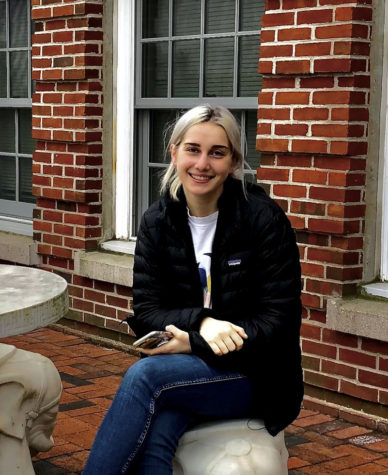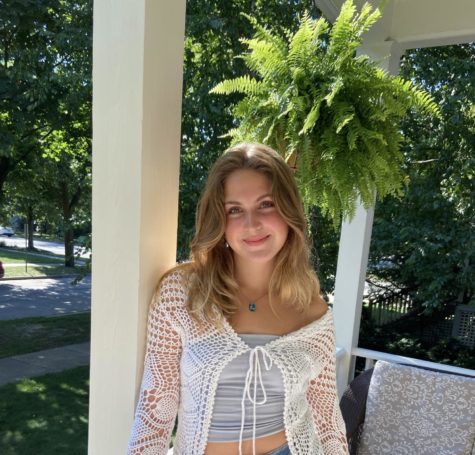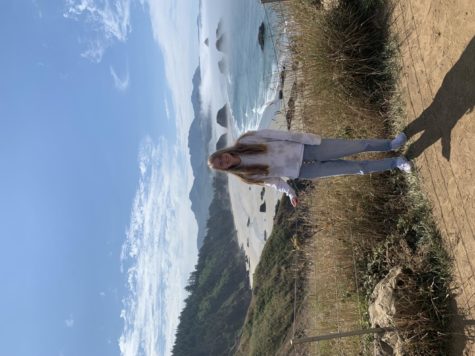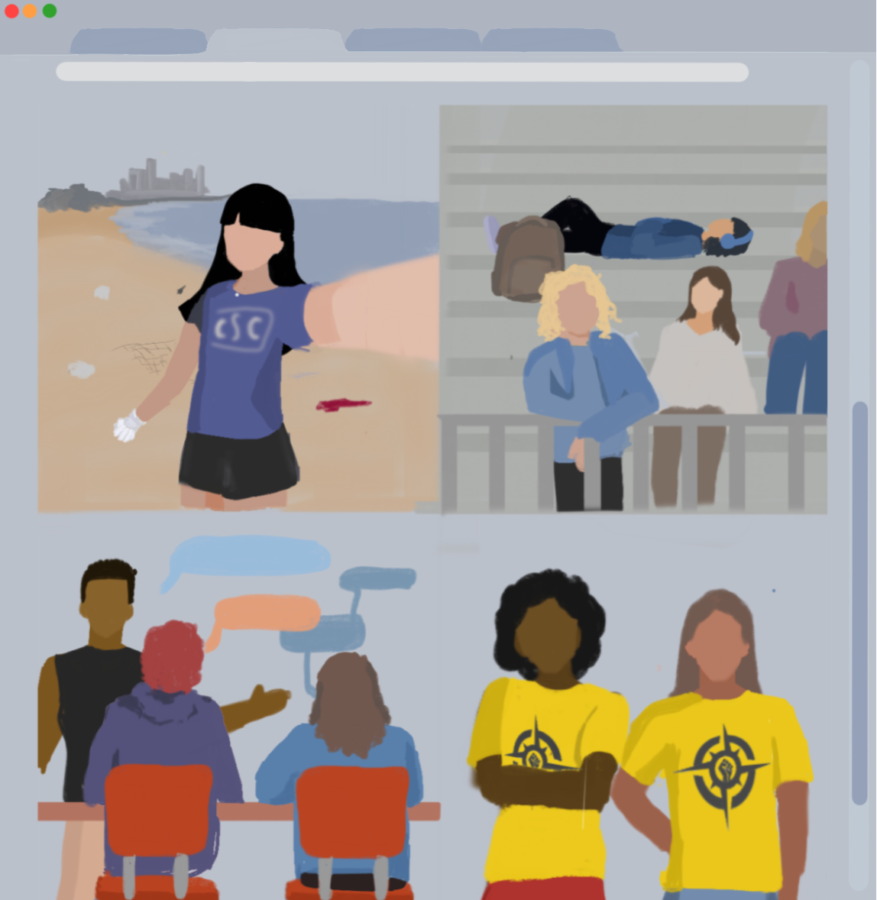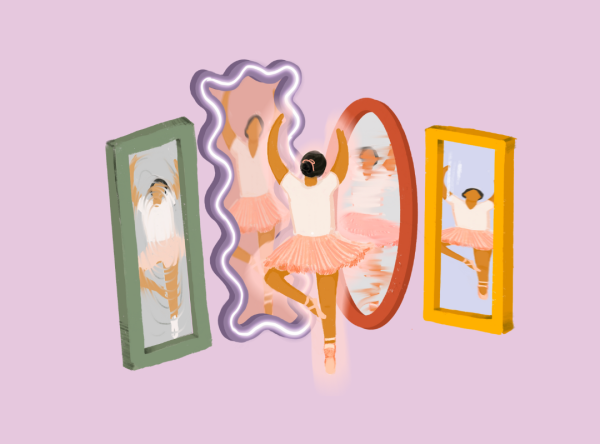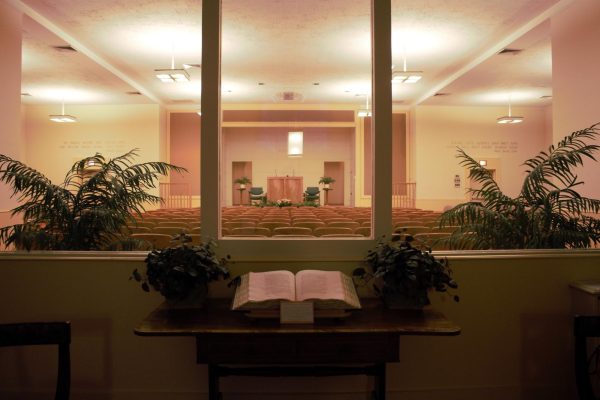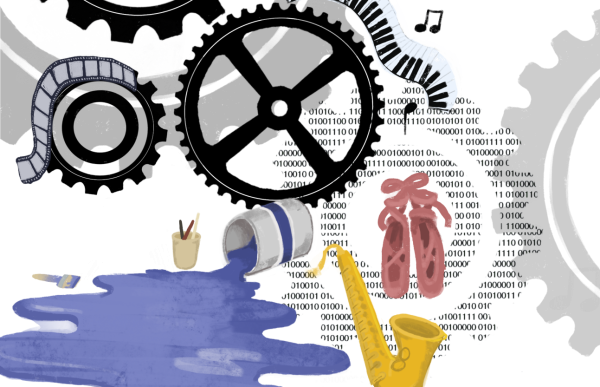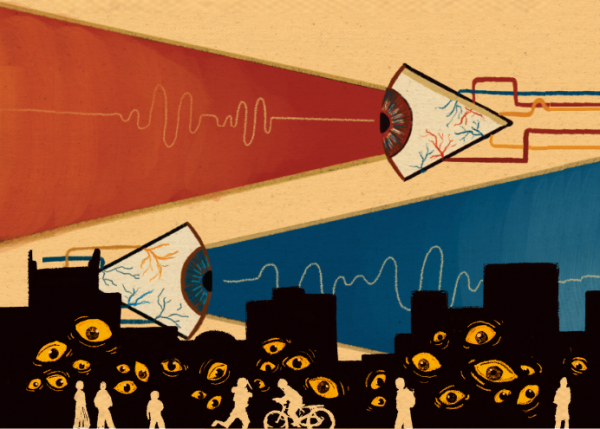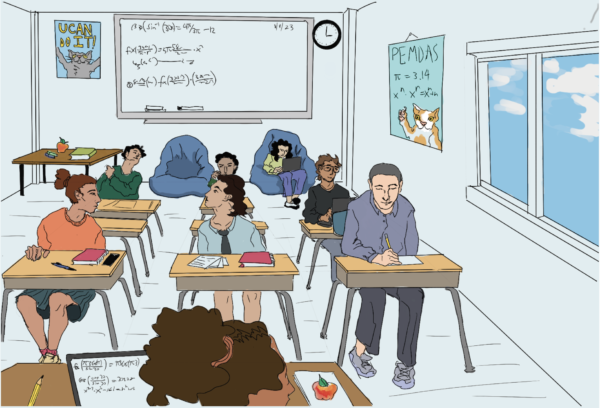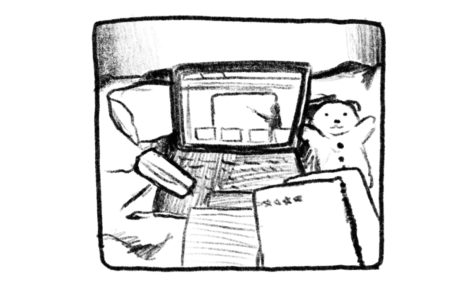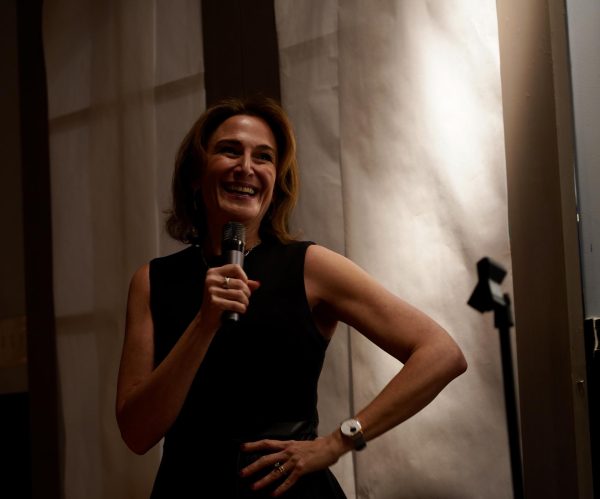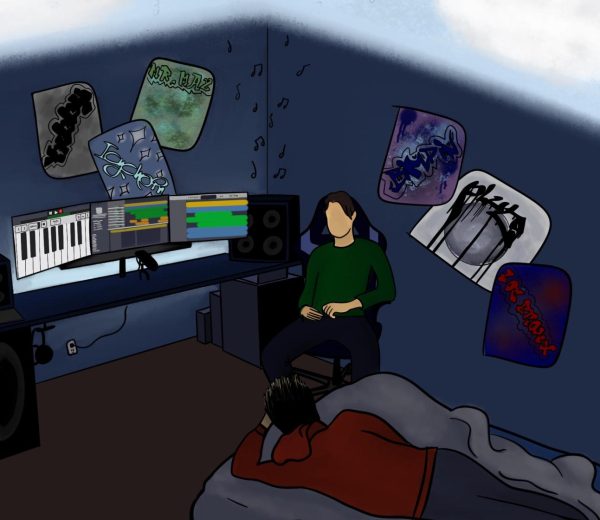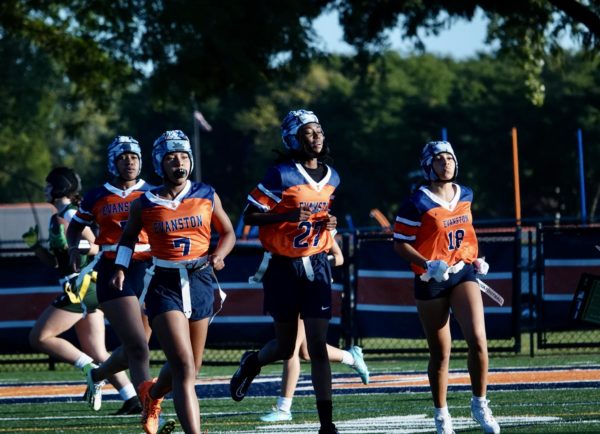ETHS activities and spaces grapple with inequities
Community Service Club, Students Organized Against Racism, Emerge and Paw Patrol are some of the most popular clubs at ETHS.
Historically clubs and activities at ETHS have been segregated, both in terms of race and gender. The Evanstonian is no exception to this pattern. For the October issue, the In-Depth staff chose to cover four organizations at ETHS to look at this trend; however, it is also important for us as a publication and as ETHS students to reflect on our place within this story.
As a part of the Evanstonian’s Commitment to Equity, we want to be open about the ways in which our organization and community needs to grow and change, in addition to these other spaces at ETHS. We recognize that The Evanstonian has historically been a predominantly white institution, and we are still working to make progress in regards to diversity. The intention is not to assert blame onto anyone, but to reference a broader culture that exists in school and the efforts made to address it.
Paw Patrol:
On Sept. 3, ETHS varsity football stepped out onto Lazier Field, immediately met by packed bleachers and an abundant fandom. Parents stood hand in hand with younger siblings as cheerleaders with wide smiles and perky ponytails flipped down the sidelines. Amongst the bustling environment of the first home game was a group of seniors, painted in orange and blue, who cheered on their classmates as they competed for a win. The group of students, although full of pep and energy, was noticeably segregated. This group is known as Paw Patrol.
Formed in 2006, Paw Patrol was previously a senior spirit group with the title of “Blue Crew.” The club was originally created as a school-sponsored endeavor to evoke school spirit in the student body. Now, the group is approved and occasionally sponsored by Athletic Director Chris Livatino but primarily overseen by student leaders Maya Wallace, Ava Axelrood, Molly Kaplan and Zoe Snider.
“Our goal is just to bring together a bunch of seniors, and just a bunch of students, to come to varsity games to support all [of] our varsity athletes,” Axelrood states.
On a surface level, Paw Patrol is a seemingly harmless and amusing way to unite seniors and demonstrate school pride. In actuality, the group has garnered a reputation for exposing flaws that lay within the student body. In 2018, the Evanstonian examined Paw Patrol, or Blue Crew at the time, and its track record of racial inequality. While the group has since taken steps towards progress, a broader culture of self-segregation across the student population perpetuates the same issues Paw Patrol has been facing for years.
In terms of diversity, Paw Patrol has been successful in getting a range of students involved. With over 300 seniors in the designated group chat,—set up to promote senior events and student sections—the organizational aspect of Paw Patrol has reached a significant portion of the senior class: a mission that the group has failed to achieve in the past.
“The games that we’ve gone to have been pretty diverse in terms of student turnout, just because my friends and I know most of the grade; we know most of the different demographics. So, we try and get everyone to come out [to varsity games]. It’s not majority white people or Black people or hispanic people. It’s definitely a diverse environment,” Wallace notes.
However, diversity and integration are two commonly confused terms with entirely separate meanings. Diversity applies solely to demographics, whereas integration investigates the interpersonal connections across those demographics. Paw Patrol has undergone improvement regarding diversity but still requires growth in terms of integration.
“I definitely feel like there is segregation, and we’ve talked about it. We have a group chat with all the seniors involved, and we’ve talked about it. It’s definitely something we’ve brought up and tried to address,” Wallace explains.
She theorizes that the lack of integration in the group is a consequence of racial separation across Evanston as a whole.
“I think that it stems mostly from elementary schools and where people live. Neighborhood wise, Evanston is very segregated, so it makes sense that who you grow up around [are] people who look like you, and you stay friends with those same people into high school. All of that carries into high school, because you form those relationships when you’re so young. It’s not necessarily exclusion so much as self-segregation,” Wallace elaborates. “[The student section] is pretty segregated, just because of how people were brought up, but with [Paw Patrol], we definitely try to provide the opportunity for different people to be around [people] who they may not have grown up around. … For the seniors, specifically, we have other events outside of just football games where people interact with each other in a more intimate setting, so we can try to break that segregation.”
Communication and acknowledgment are essential components of abolishing this culture of self-segregation found within the student section. Seniors within Paw Patrol have already initiated constructive conversation regarding the issue to the group as a whole.
“I think it’s an issue that we’re all mature enough to address and mature enough to realize, because we’ve definitely seen improvement, and we’ve definitely seen more people branch out to each other. I think [addressing these issues] just creates a better atmosphere, because we all are aware of what [issues] we’ve had in the past, so we’re trying our best to keep it super integrated and super welcoming. … I think that, when we address the situation, it only makes it better; I don’t think it causes any tension,” Axelrood shares.
Seniors affiliated with the group have also noticed progress in terms of establishing a more inclusive environment within the student section. While seating arrangements for the first few football games were criticized, some students have recognized growth in more recent games.
“I think [for] the first couple [of] football games, the student section was pretty separated. … In the front was mostly white people, and towards the back was the Black community and more of the marginalized students, but I think it’s very integrated now,” recalls senior Damascus Wheeler. “I know a lot of people have had the chance to say a lot of things about that. Sometimes, there’s a lot of spamming in the group chat, but it’s constructive; there’s a lot of conversation about how separated we were. If there are concerns, they are voiced to Maya or [other leaders], but anyone can speak up about concerns they have and ideas they might have to fix it. I think the environment is very welcoming now, and everybody has a voice now.”
Paw Patrol models a larger societal flaw within the Evanston community, but meaningful discussions have allowed the group to challenge this cultural norm. Self-segregation across the student body is not a new occurrence, but students are working to fix it with one another and without the intervention of authority figures.
Wallace expresses, “The fact that there are no adults or parents involved, facilitating everything and trying to force relationships, makes it better. Overall, I think it’s better to be student-led, because students trust each other more than random faculty members, so it makes the space more student-focused.”
Livatino reinforces this notion by supporting the student leadership. He has attended meetings with the seniors who lead the group to provide his assistance in making the group successful, but he allows the leaders to run and structure the group on their own terms.
“We’ve tried [in the past] to do it more systematically, but I think, organically, kids respond better to what kids want to do [rather] than what adults want them to do. Like I said at the very beginning, whatever this group wants to do, it’s great; I’m not [going to] micromanage how they do what they do,” he states.
Paw Patrol inevitably still faces issues regarding self-segregation within the group, as the practice is deeply rooted in the majority of the Evanston community, but continuing the conversations across students furthers their progress and provides more hope for the future. As long as Paw Patrol’s members continue to prioritize breaking down the barriers that have kept the student body segregated for so long, there will be unity in the stands for seasons to come.
Community Service Club:
Leadership opportunities in schools are crucial for further developing learning outcomes for students. The importance of leadership does not distract from the fact that many students at ETHS do not feel like leadership experiences are accessible to them.
At ETHS, the Community Service Club (CSC) is a popular activity that an estimated 200 students take part in. CSC is a gateway for students to improve their community and build relationships.
“CSC has really been the place to let students come together and do service here at school, within the entire ETHS community, to help organize things like school-wide fundraisers and events. Also, helping students find a place where students organize themselves to do service in the local community as well as together,” CSC coordinator Diana Balitaan explains. “The goal overall is to foster community and do service locally, but also to foster community within the club as well. That has been, I think, a newer objective, from what I’ve seen in the past couple years.”
Balitaan acknowledges that fostering community can be hard to achieve, but CSC is working towards this goal daily. One prominent challenge the club faces is understanding the purpose of service. Senior and CSC co-president Joanna Tafolla explains how many students may join to complete application requirements but stay for the rewarding projects they are able to do.
“I feel like most students join CSC to get hours to look good on the college applications, but I feel like once you get involved within CSC, you get to meet different people in different organizations, and you truly get invested in the mission of certain organizations and the club,” Tafolla states.
Balitaan and Tafolla both recognize the push for students to complete community service hours to appeal to their post-secondary options, but they are both also working to create a space in which students desire to participate for reasons other than the completion of service hours.
Another issue CSC faces is its lack of participation from students of color. Balitaan speaks to the history of racial and gender disparities represented in CSC.
“It’s still a majority-white club. I think it’s important to make sure it feels like an inclusive space for all students, because we are. It is a space to meet people, to get to know the community and so on. But I do know, even from my own personal experience, it is really hard to walk into a room with people that don’t look like you, especially in a group of 200, and then wonder, ‘Should I be in this space?’ I know the importance of personal connection,” Balitaan says.
Balitaan is dedicated to providing an equitable and diverse experience for all students, but the most important question is whether students feel as if CSC is an inclusive space for them.
“When I first joined, I was one of the few [people of color] in the club, and most of the leaders were not [people of color],” Tafolla states. “There was barely any diversity on the board, and it was a little intimidating for me to go into that club and not find people who pertain to the same groups as me. Just having a place where you can see someone who looks like you be a part of the leadership kind of makes one person feel safer in that club. That’s probably why I became a leader, just so that I could see more people join who look like me”.
Tafolla has been a member of CSC since she was a freshman. Despite the club being mostly white, she has seen racial demographic changes.
“There are a lot of white girls in the CSC. It’s a little intimidating, because I feel like lots of people come with their friends, so, it’s typically the white girls who are on [the] board, but over the years, I feel like I have seen more minority students becoming a part of the leaders and actually applying to be a part of the leadership.” Tafolla says.
Tafolla mentioned that she feels that the true reason why CSC is slowly becoming more diverse is because of student-to-student communication.
“I feel like, with the CSC, we still need to promote more diversity. I don’t feel, as a club, we’re really doing it, but I feel like the students are promoting other students to join,” Tafolla says.
Junior and one of CSC’s leaders Grace Motogawa had a different view on the lack of diversity. She focused on the gender disparity present in CSC.
“There’s a severe lack of male involvement. There’s literally one boy who’s a leader. I just feel like anybody can do CSC, but I think that [Balitaan] and the leaders really try hard to make it a diverse and welcoming community. But then, at the same time, you can’t force people to join,” Motogawa states.
Motogawa also spoke about what might push away male students. “I don’t want to say something like, ‘Oh, boys aren’t into community service’ because that’s not true. … There’s just a lot of female leaders, and I guess if I were a boy and I went to one of the all club meetings, and I saw that there were all girls, [I’d feel uncomfortable]. I feel like people join clubs to meet people that they connect with, and that’s not really there for [boys].”
As the CSC coordinator, Balitaan has been trying to make CSC a more welcoming and less intimidating space for students.
“We just build on interest, and it kind of lessens the barriers of having to come to a meeting [and] having to fill out a form versus being like, ‘Hey, I have a few spots for this weekend for right after school, are you interested in coming?’ and I think a lot of students end up coming that way even if they’re not officially part of the CSC,” Balitaan says.
In partnership with Balitaan, student leaders share similar visions for the club’s progression. As a senior, Tafolla reflects on her experience with CSC and her hopes for what the club will look like once she has left ETHS.
“I didn’t join the club because I felt like there were people who looked like me. I joined the club so that I could be the person to help other students, who look like me, not have to go through what I felt [like] when I first joined the club.” Tafolla says. “I want them to feel like there is a space for them.”
Emerge:
Along with CSC, Emerge is a service organization at ETHS, focusing on the development and application of leadership skills with an emphasis on social justice. In Emerge, students brainstorm issues about which they’re passionate and use principles of asset-based community development to partner with local organizations.
“We want to take students … and teach them how to work in groups to lead others, [how] to be in touch with their own leadership styles, how to research, who to talk to … and also tactics to problem-solving and getting things done, rather than just being upset about all [of] the problems in the world,” explains history teacher and Emerge sponsor Andrew Ginsberg.
Emerge was established in 2008 as a collaboration between ETHS, Northwestern and the Evanston Community Foundation on the idea of fostering youth leadership and connecting students to community organizations. Emerge can be divided into three sections: initiative, sustainability and outreach.
A lack of both racial diversity has affected Emerge since its beginning, with the organization having a majority white population.
“I think when Emerge started, [about] 10 years ago, it had this reputation [of] being very heavily [composed of] white kids and having representation from Northwest Evanston,” Ginsberg says. “The kids knew that and were concerned about it. … One of the problems was kids would do [Emerge], tell their friends or their parents were excited about it and they would tell their friends, and [participation] just kind of went by word-of-mouth.”
Emerge co-chair Jaya Fields explains how being one of the few students of color in Emerge impacted her when she first joined as a sophomore.
“It was really hard for me, just because I felt like it wasn’t a representative space. … I think that’s why diversity is so important, because when you’re in the [Emerge] space as an underclassmen or just a younger person looking up, you want to see yourself represented at a higher level, because it’s almost a motivation for you. So, I think when you see that [representation], you’re more inclined to come into those spaces.” Fields says.
Gender diversity is also an issue Emerge faces; only a small number of participants identify as male.
“We’re mostly female-identifying students. Before I started getting involved in Emerge, there was a [mentality of] ‘take any boy that applies’ sort of thing, but we’ve changed our mind on that. [The gender disparity] is unfortunate; it’s the way that we’re socialized. Girls are socialized to be more caring and more thoughtful, and boys are socialized to meet their … goals. Some of it’s [due to the fact that] we mature differently,” says Ginsberg.
In an effort to make the space more inclusive, Emerge is working on recruiting students who’ve historically been underrepresented in the club. They are doing this by reaching out to students during lunch periods, over the announcements and through social media.
“We’re really pushing this year to get more voices in our space because we don’t want to talk about social justice from the perspective of [whiteness]. … The co-chairs are diverse, and we’re trying to get more people,” Fields says.
“Based on our mission and the issues we take on, not only should we match the demographics of the school, we should probably exceed them as far as participation of students of color; that’s just something we’re always concerned about,” Ginsberg says. “We’ve tried to recruit in more spaces [and] have a wider, [more] diverse array [of members] and diversity of our students who we are recruiting. We’re making some progress, but I think if you ask some of our African American and Latino students, I think they look around the room and still don’t see enough of themselves to feel totally comfortable. We’re working on it.”
Emerge is comprised of two primary programs: Initiative and Sustainability, in addition to their Outreach Committee. In Initiative, students create projects to address specific community issues by partnering with local organizations. In Sustainability, students preserve past initiative projects.
“We have a lot of diversity amongst our board. A majority of us are students of color, especially for Initiative. [For the Initiative program], we have two Black co-chairs, and we have two Latino and one white. So we do have a lot of diversity amongst leadership positions,” senior and Emerge co-chair Michael Burell says.
Ginsberg emphasizes how increasing diversity in Emerge is essential to being able to effectively tackle the issues each topic group addresses.
“I feel like race is tied into a lot of the issues that we want to work on, maybe all of them even. So as well-meaning as white people are, we often can’t understand this fully, the way that race plays into an issue. So that’s an important factor, and then we want to avoid tokenism or white savior sort of stuff. That’s easier done if you’re working in a diverse setting,” says Ginsberg.
The diversity of Emerge has also affected what issues its groups have focused on. Burell discusses two of the topics he worked on with Emerge in the past.
“There was a police brutality group, which was a group that I was facilitating last year; they made a website. [On the website] they [talked about police brutality] and [ways to] help. Then, they got in contact with Evanston alder-people and city officials who helped them. They also worked in partnership with Evanston Fight For Black Lives. [I also worked on] an immigration project. My group had affordable housing. We made a lesson plan, and we submitted it to the civics classes, because there’s a unit in civics where they talk about redlining and we talked about affordable housing,” Burell says.
Resonation with the selected issues allows for leadership positions to expand to a more diverse demographic.
“I think the leadership roles are more diverse, which is pretty reassuring. I think it’s part of having a connection to the issues we talk about that keeps people involved with it. Quite honestly, a lot of students do Emerge and don’t feel passionate about what we’re talking about, and I think part of that is that maybe they’re not affected by the issues. If we talk about the housing crisis or [a] lack of schools in the Fifth Ward … it just doesn’t really hit home. That’s a privilege to not have that resonate with you, but I think [that if] people are connected, then you can get to the next level,” Fields says.
The leaders of Emerge recognize that for the organization to grow, its goals for gender and racial diversity need to be met. The leaders want to create a more accessible environment and continue to expand outreach because they believe participating in Emerge is beneficial for students.
“I hope we can just keep continuing to make progress and build on our strengths, [including] caring for students who want to make a difference, take a humble approach to improving their leadership skills and be open-minded about how change works. [We want] to have [Emerge] be [involved with] a wider percentage of the school [to] get more ideas out there and to get more perspectives and benefit from different talents. I just hope that keeps happening,” says Ginsberg.
Students Organized Against Racism:
2020 increased the awareness of race-relations in the U.S, and Americans are seeking ways to achieve justice in their communities. While protests, sit-ins and court proceedings are useful tools in mobilizing change, courageous conversations—requiring a smaller group of people—unpack systemic racism while also creating intrapersonal connection. In Evanston, courageous conversations center the work of ETHS’ SOAR, a student-led organization dedicated to expanding consciousness about social justice issues.
“A big [way] SOAR addresses instances of racism is [through] having conversations and creating spaces for people to talk and imagine what life would be like if everyone was included in spaces that they were historically excluded from,” says ‘21 alum Meena Sharma, “[This looks like] having spaces for conversation, holding equity workshops for different sports and clubs at ETHS and designing activities to challenge people to expand their mindsets to incorporate more students of color.”
Sharma was a member of SOAR throughout her four years of high school. She recalls having a variety of conversations to address current events that displayed the country’s racism.
“My first experiences from SOAR were the conversations we had around making classrooms more equitable and inclusive. [My senior year,] we talked about the events that were happening in and around the country during 2020 and before with regards to police brutality and systemic anti-Blackness.”
SOAR has cultivated an essential role in deconstructing racism in Evanston. In 2015, SOAR implemented its first equity zone: classrooms identified as “safe spaces” where students can engage in thought-provoking discourse with staff members about their multifaceted identities. Students are also given other opportunities to participate in anti-racist work; including office hours and the bi-quarterly SOAR Conference, in which participants speak openly about their experiences with race, microaggressions, intersectionality and whiteness.
While SOAR has become a notable engine in expanding Evanstonians’ consciousness of race, the group also faces challenges with diversity. Historically, SOAR’s Leadership Board has been predominantly students of color; this year, however, the space is “dominated by white women,” according to facilitator Corey Winchester.
“We have the most white folks that we’ve had in a while that are on [the] board that are actively engaging in the creation of this space. That’s not to say that we don’t have representation from other voices. But I think, when you look at the percentages, of the 23 members currently, who are [actively] volunteering to be on board, we have about 10 to 13, [and] most of the folks that are engaging right now are girls or white,” he expands.
Winchester has worked with SOAR since its creation in 2012. The precursor to SOAR was a committee known as the District Equity Leadership Team (DELT). Winchester discusses the goal of DELT in which ETHS staff worked on creating school-wide “institutional and systemic changes” regarding racial inequity. In part of an effort to engage more students in the process, DELT created SOAR.
“We basically [wanted to] share some of the tools that adults were using to engage in courageous conversations [to students]. We were attempting to model the experiences that adults had,” he says.
The significant demographic change of the club can partially be attributed to a rise in white consciousness. The summer of 2020 sparked a national outcry for racial justice and police reform, and an unprecedented number of white people participated.
“I think with the events of the past year, and this whole [reckoning] about the systems of anti-Blackness and racism being so deeply ingrained into the fabric of this country, I feel like more people were recognizing that they have a responsibility to change that, and I think white students specifically were realizing that they had many privileges and an ability to change the way that these systems are, so I think that that’s where a sort of realization came in, so more white students were encouraged to participate in SOAR,” says Sharma.
While white participants outnumbering POC students is relatively new for SOAR, the organization’s gender imbalance is long standing. According to Winchester, “A lot of folks who do this type of [anti-racist] work [are] women-presenting.”
Winchester best attributes the lack of male participation in SOAR due to the feminization of social justice movements—in which female-identifying folks participate more in activism than their male counterparts.
“I think [the gender disparity] mirrors some of the same types of energies you see from other social movements that are trying to combat different systems of oppression. [For example,] the three founders [of] the Black Lives Matter movement were Black women—some of whom are queer. I’m [also] thinking about some of the organizers who rallied to try to bring some form of gun control after the shooting at Marjory Stoneman Douglas High School in Florida. I think those parallels [in regards to gender] exist in this space.”
As SOAR continues to combat systems of oppression in ETHS, its members recognize the role of intersectionality when engaging in courageous conversations. While it is important to recognize the uniqueness of multifaceted identities, students of colors’ voices must be centered during conversations regarding race.
“From an intersectional perspective, you don’t want that whiteness to overshadow some of the experiences for folks of color in [anti-racist] spaces,” says Winchester.
Something particularly secular to the internal fabric of SOAR this year is avoiding white feminism: an ideology which “preaches the importance of individual success and conceives of equality as something women can achieve primarily through careerist endeavors and the exploitation of other women and marginalized people,” according to NBC News.
As Winchester puts, “In the past, there was a consciousness around making sure that white feminism and that particular brand didn’t become the dominant experiences when we’re trying to navigate around racism. White feminism has historically been something that has been exclusive of women of color and trans women,” he says, “I think there’s been a consciousness from previous years to make sure that there’s balance so [race and the voices of students of color] are dominant.”
Your donation will support the student journalists of the Evanstonian. We are planning a big trip to the Journalism Educators Association conference in Philadelphia in November 2023, and any support will go towards making that trip a reality. Contributions will appear as a charge from SNOSite. Donations are NOT tax-deductible.
